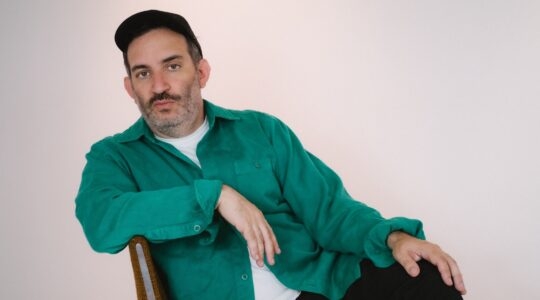Candlelighting, readings:
Candles: 6 p.m. (Fri.); 5:52 p.m. (Wed.);
6:55 p.m. (Thu.)
Torah: Exodus 33:12-34:26; Numbers 29:17-25
Haftarah: Ezekiel 38:18-39:16
Havdalah: 7:01 p.m.
If you Google sukkat shalom (“sukkah of peace”), you get hundreds of references, most of them titles of synagogues and lyrics for songs. The synagogue names bespeak a deep-seated desire to congregate in places of respite. The song lyrics acknowledge the metaphor’s origin, our nightly prayer that God “spread over us Your sukkah of peace.” We call the prayer Hashkiveinu, “Lay us down,” a perfect nighttime meditation for that twilight moment when the daily grind succumbs (we hope) to nightly rest.
Tradition connects this sukkah of peace to God’s promise to “raise up the fallen sukkah of David” [Amos 9:11], a glorious picture of the end of time when Israel’s travails will have come to an end. The nighttime Hashkiveinu reflects this very “raising up” by following “lay us down in peace” with “raise us up to life.” Here, too, it is possible to see a messianic theme, relief from exilic oppression, just as Amos had foreseen.
That can hardly have been the prayer’s original intent, however. It is a mistake to think that even people in the Middle Ages lost much sleep over cataclysmic metaphysical issues like the eventual restoration of the Davidic monarchy and the coming of the Messiah. These eschatological metaphors were appealing because they provided ways to ponder the more immediate problems that prey on our minds and rob us of sleep: “disease, violence, want and agony” (dever, cherev, ra’av v’yagon), for example. Hashkiveinu was, first and foremost, a bedtime prayer reflecting the hope for a night of peaceful sleep.
Its bedtime image of the sukkah came from the holiday we celebrate this week. The simple joy of sitting in a sukkah, consuming festive meals in the ambience of nature’s fullness is a perfect antidote to the harried lives we normally pursue. Whether in our nightly prayers or in the temporary booth we call a sukkah, we are invited to pause for inner reflection and outer quietude.
But as we have seen, that is only half the image of Hashkiveinu — and half the image, also, of the sukkah. Like it or not, “lay us down in peace” becomes “raise us up to life.” If “lay us down in peace” addresses the real nighttimes we endure, then “raise us up to life” speaks to the real daytimes we confront. A nightly wish for peace is fine, but when morning dawns we awaken to the real world of work and worry. So too, we should not get too comfortable in our sukkah of peace. Like peace itself, the sukkah is deliberately made to be temporary, a feeble structure that cannot last. When Sukkot ends, we face the autumn preamble to the inevitable blast of winter.
Sukkot peace should not become soporific, dulling us to the tasks that will follow. We have every right to enjoy a week of languor in the sukkah, but not at the expense of deluding ourselves about what lies beyond it. Words have many opposites, some healthy, some not. An unhealthy opposite to “tranquility” is “anxiety”; a healthy one is “urgency.” When life resumes at the end of this Sukkot, it should do so with some urgency. Life matters, after all, and life consists of the real world outside the sukkah’s walls. Both peace and struggle are part of the human package; we don’t get one without the other.
Human nature suggests we would prefer evading life’s exigencies. I am not thinking of such immediate challenges as earning a living, confronting sorrow, building relationships and just plain making it through each day; these impinge so noticeably upon us that we can hardly avoid them (although some of us try to). My concern is the larger issues that we delude ourselves into discounting, if not downright disregarding – the fractures in our country, aging of our Jewish institutions, and dangers to our planet. The life that greets us when the sukkah comes down is not an altogether pretty thing.
Not that we should despair; there is much about the world to celebrate, and celebrate we do, when we emerge from the cocoon of the sukkah for the joy of Simchat Torah, which has us recollect again how “In the beginning, God created the heavens and the earth” and found it “good.” It is this image of a naturally good world that should consume us as we take up realistic residence in the world.
When sitting in the sukkah ends, we rise up to life in a world whose continued goodness depends on us. Our holiday month of Tishri gives way to Cheshvan, a month known best for having no holidays in it at all. It will be time to go back to work.
Rabbi Lawrence A. Hoffman, professor of Liturgy, Worship and Ritual at Hebrew Union College-Jewish Institute of Religion, is the author of “All These Vows—Kol Nidre” (Jewish Lights).
The New York Jewish Week brings you the stories behind the headlines, keeping you connected to Jewish life in New York. Help sustain the reporting you trust by donating today.




